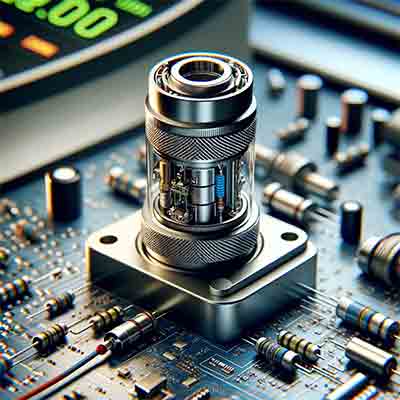I was wondering if you can give me a more detail information about your piezoelectric thin film substrates. PMN-PT the optical properties and electro-actuation characteristics is of interest of me.
What Are Some Uses of the Piezoelectric Effect?
Piezoelectric Wafers
A postdoc fellow requested a quote for the following:
Reference #162410 for specs and pricing.
We have a large selection of wafers in stock for your piezoelectric research.
Get Your Quote FAST! Or, Buy Online and Start Researching Today!
What are Piezoelectric Effect Applications?
The piezoelectric effect is the conversion of mechanical energy into electrical energy by means of crystals. A regular crystal has a repeating structure of atoms that are held together by a bond. This unit cell is known as the unit of the piezoelectric effect. In contrast, a symmetrical crystal such as iron would be useless for  piezoelectric purposes. Hence, some applications for the physics of this effect include atomic resolution, ultra-fine focusing of optical assemblies, and ignition sources. These include electric cigarette lighters and gas grills. In electric cigarette lighters, a piezoelectric crystal carries a voltage across a spark gap and generates an electrical current. Large ovens, gas burners, and microwaves also use a piezoelectric power system.
piezoelectric purposes. Hence, some applications for the physics of this effect include atomic resolution, ultra-fine focusing of optical assemblies, and ignition sources. These include electric cigarette lighters and gas grills. In electric cigarette lighters, a piezoelectric crystal carries a voltage across a spark gap and generates an electrical current. Large ovens, gas burners, and microwaves also use a piezoelectric power system.
The hammer striking a piezo material generates a spark that ignites the flammable gas. Piezoelectric sensors can detect minute disturbances in objects, making them ideal for industrial nondestructive testing or medical imaging.
The piezoelectric effect can be used in many areas of science. Some of the more obvious uses of piezoelectric materials are in the fabrication and sensing of sound. It is used in spark lighters, ultrasound transducers, acoustic guitar pickups, and vibration sensors. It has also been applied in rockets. In fact, NASA has been investigating the use of piezoelectric materials for a long time. The technology can be harnessed for radio waves and other devices that transmit information.
The piezoelectric effects high-frequency pulses can be generated to measure temperature. Its low frequency can also be used to generate ultrasound waves. Likewise, the piezoelectric effect can be used to create sensors and actuators. For example, a hammer striking a piezoelectric material can be used to detect minute disturbances.
Another common application of the piezoelectric effect is in the field of electronics. Its main function is to convert mechanical energy into electrical energy. The result is a signal that can be stored in an electronic device. Piezoelectric materials are highly sensitive, making them ideal for detecting minute disturbances. However, these devices can be difficult to manufacture if they are not designed properly.
Listing all piezoelectric materials in order from most to least powerful is a complex task, as the piezoelectric properties of a material can vary based on several factors such as crystal structure, purity, and processing methods. However, I can provide a general overview of some well-known piezoelectric materials, grouped by their relative piezoelectric strengths:
Substrates Piezoelectric Properties In Ascending Order
-
High-Power Piezoelectric Materials:
- Lead Zirconate Titanate (PZT): A widely used ceramic material known for its strong piezoelectric properties.
- Barium Titanate (BaTiO3): Another ceramic material with significant piezoelectric effects.
-
Moderate-Power Piezoelectric Materials:
- Quartz (SiO2): A naturally occurring crystal with moderate piezoelectric properties.
- Zinc Oxide (ZnO): Commonly used in thin films and nanostructures.
-
Lower-Power Piezoelectric Materials:
- Polyvinylidene Fluoride (PVDF): A polymer material with relatively lower piezoelectric strength compared to ceramics.
- Langasite (La3Ga5SiO14): A crystal material with lower piezoelectric properties than PZT or quartz.
-
Emerging and Exotic Piezoelectric Materials:
- Aluminum Nitride (AlN): Used in thin-film applications.
- Gallium Orthophosphate (GaPO4): Similar to quartz in its piezoelectric properties.
- Boron Nitride Nanotubes: Exhibiting piezoelectricity at the nanoscale.
It's important to note that this list is not exhaustive and the ranking of materials can vary based on specific use cases and processing techniques. Additionally, the development of new materials and composites is an ongoing area of research, potentially leading to new piezoelectric materials with varying strengths and applications.
